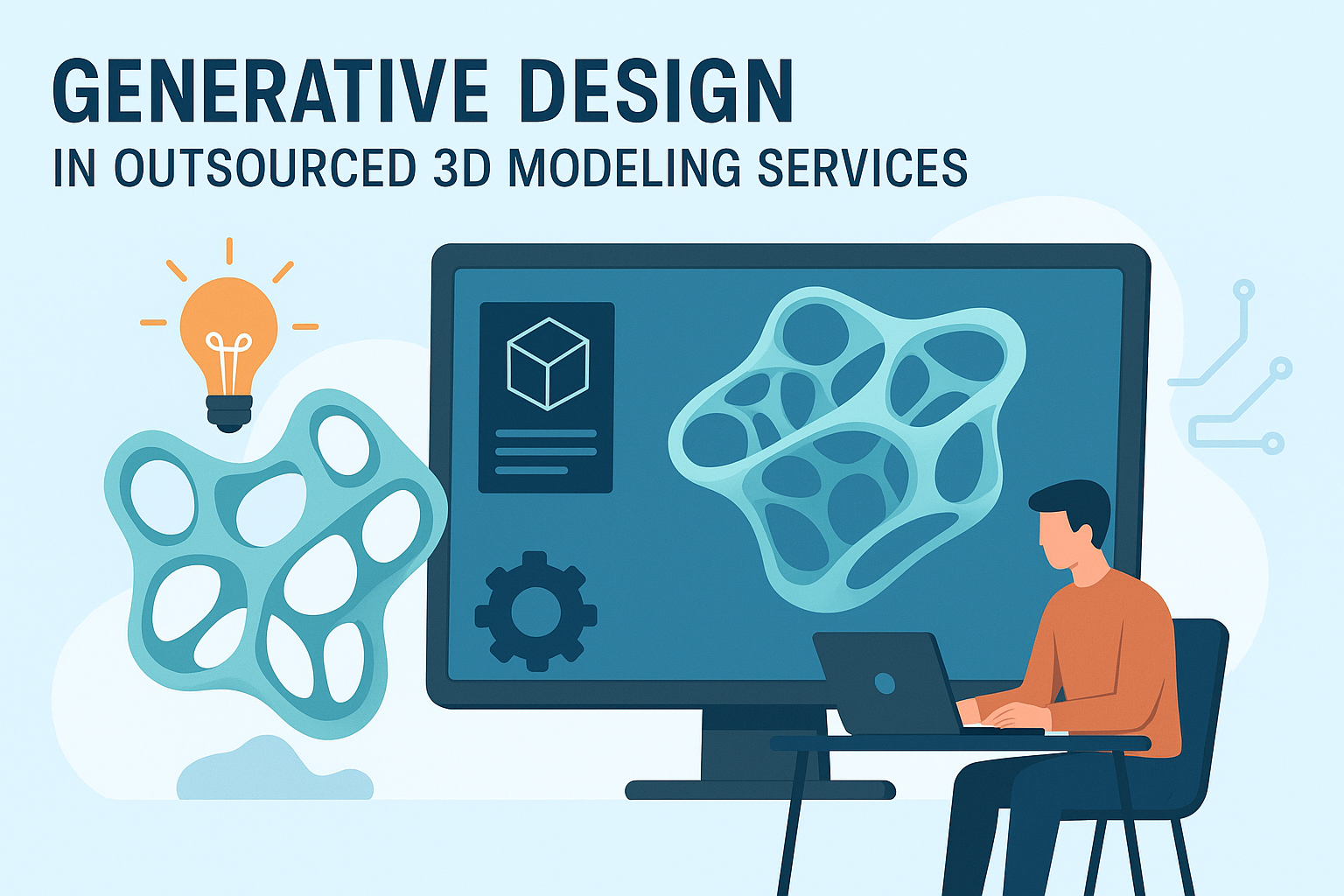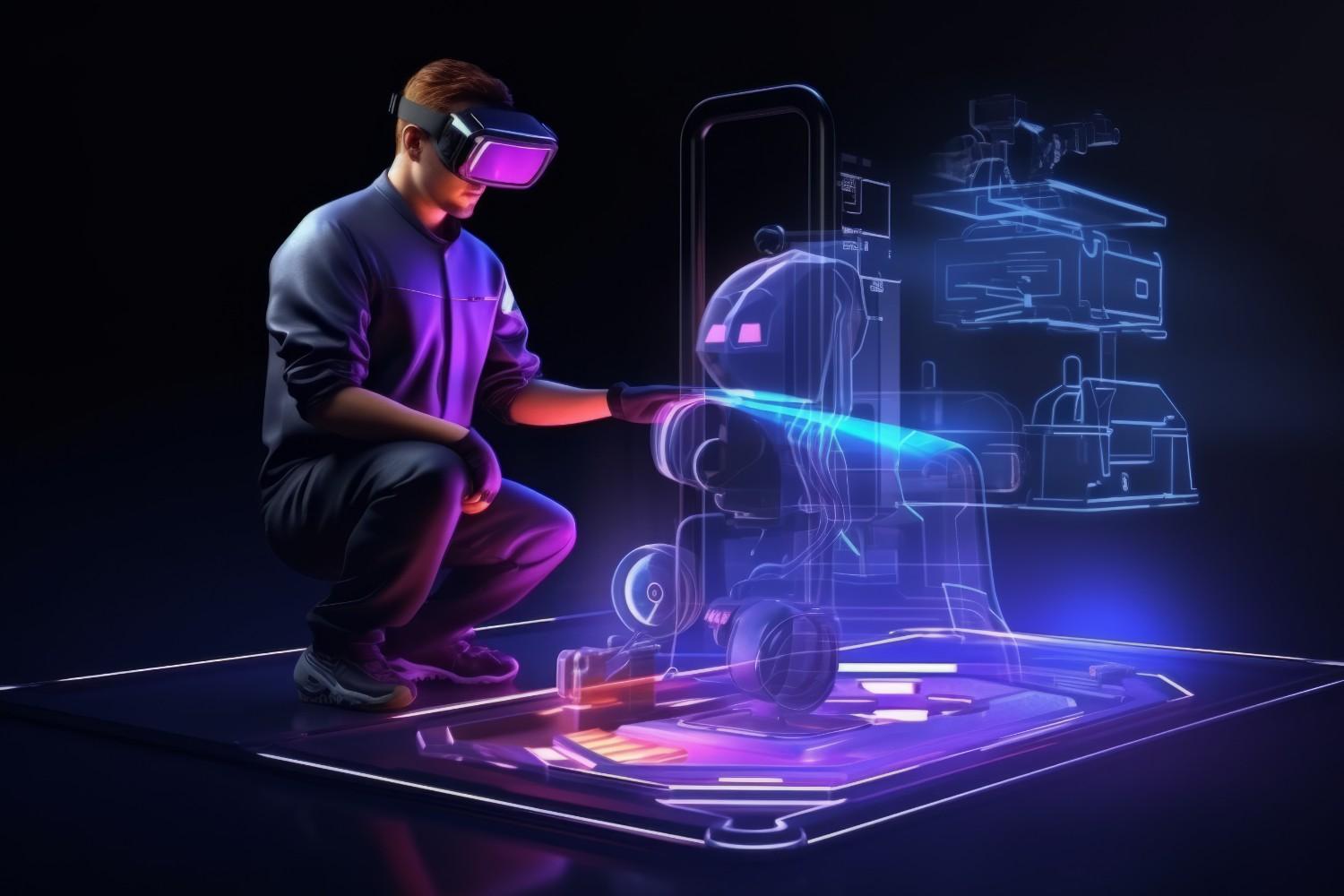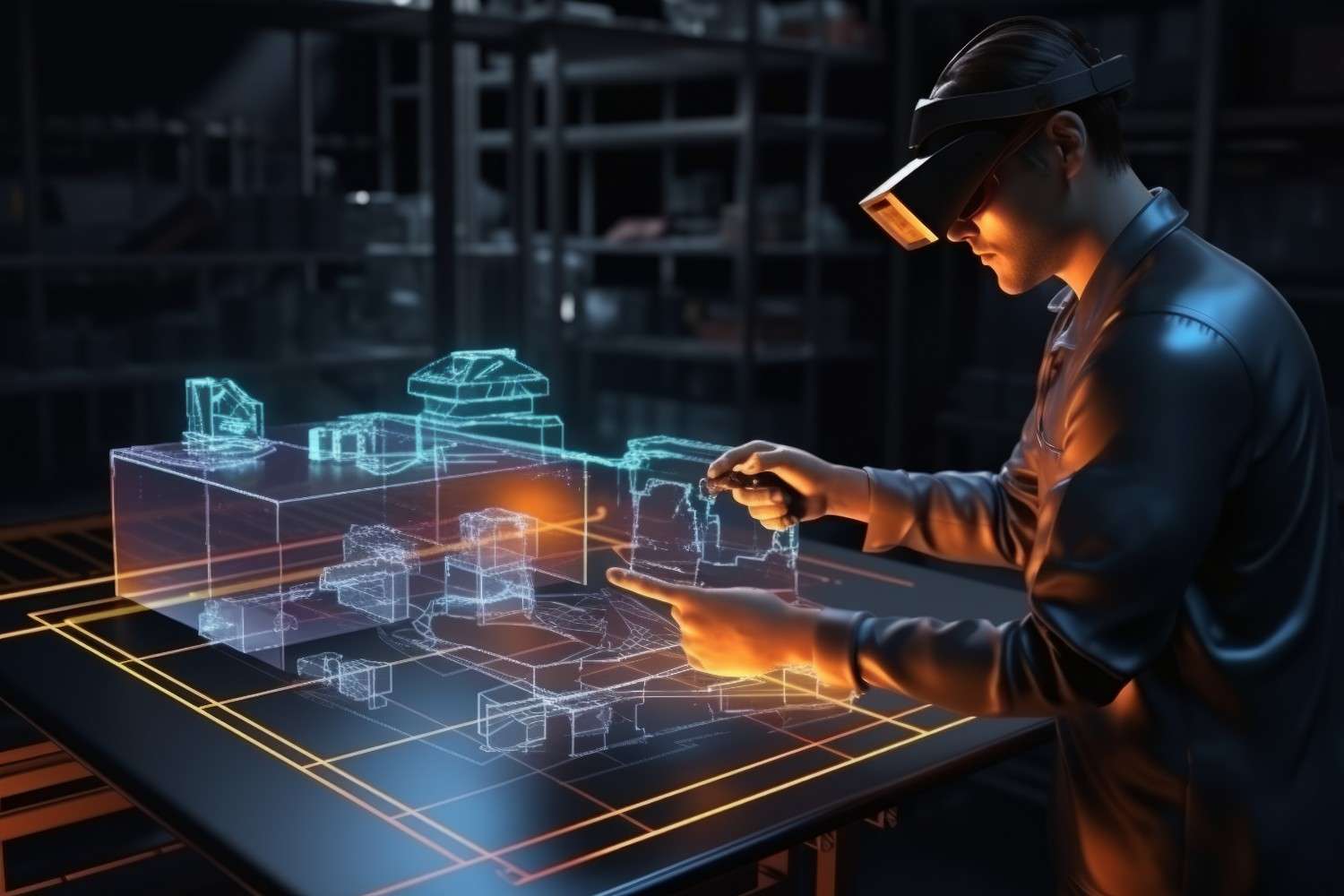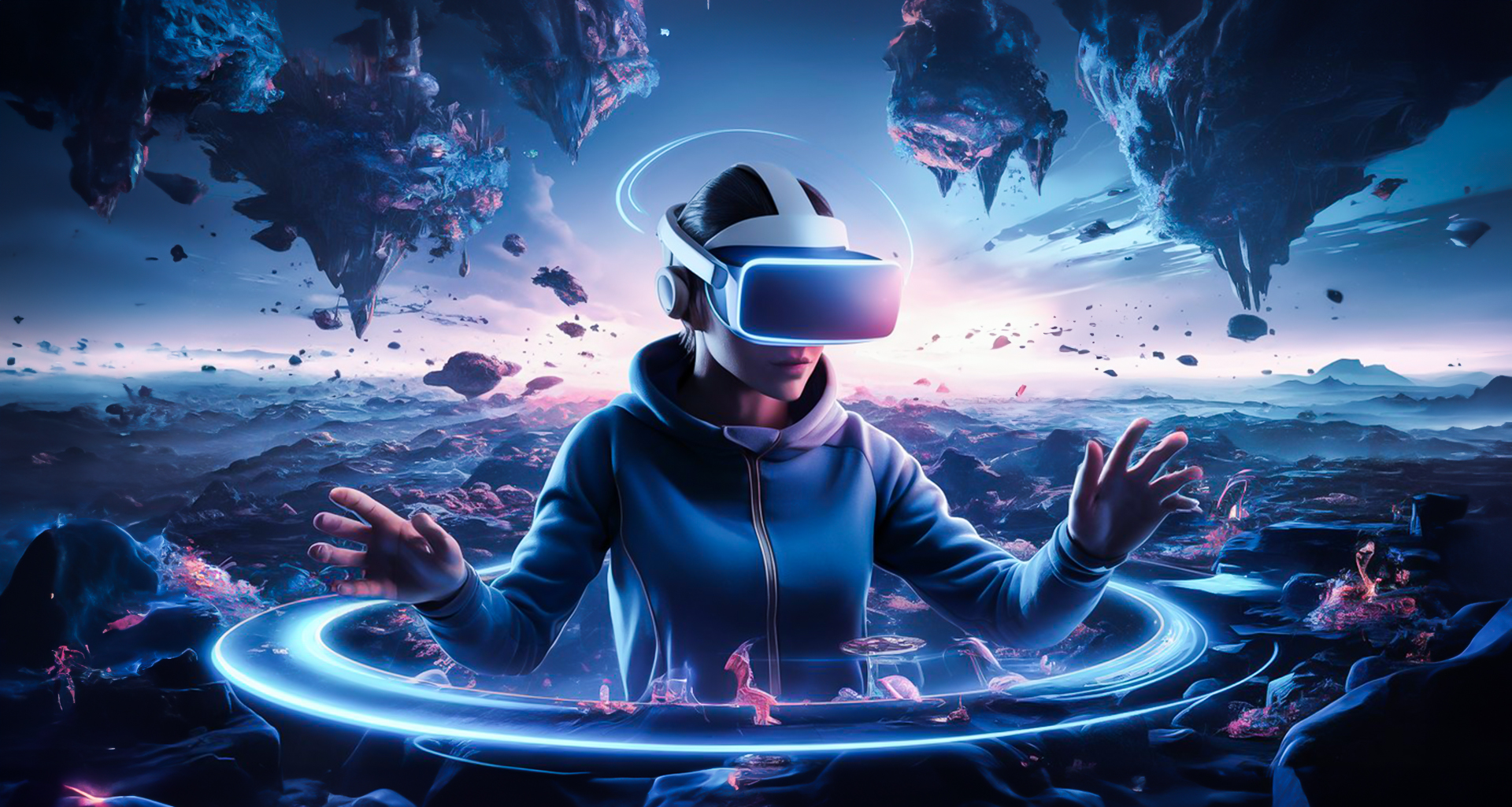The Metaverse—the convergence of virtual, augmented, and physical realities—is no longer a futuristic concept; it is the next evolutionary stage of the internet. This boundless digital frontier, encompassing everything from immersive VR training simulations to instant mobile AR commerce, runs entirely on one crucial element: the high-fidelity, optimized 3D Model.

For businesses eager to plant their flag in this emerging ecosystem—whether launching digital twins of their products, constructing virtual 3D Architecture showrooms, or offering AR shopping experiences—the demand for specialized 3D Modeling and Design talent has exploded. The complexity, volume, and unique technical requirements of this work make relying solely on internal resources impossible.
This is why strategic Outsource 3D Modeling services has become the critical accelerator for Metaverse, AR, and VR development. It is the most efficient, scalable, and technically sound way to bridge the gap between physical reality and digital immersion.
This guide delves into the specific technical requirements, workflows, and strategic advantages that make outsourcing indispensable for creating the next generation of Augmented Reality – Virtual Reality Models and enabling the digital twin economy across 3D Product Design and 3D Furniture Modeling.
I. The Technical Chasm: Why Metaverse Models Are Unique
The biggest challenge in creating content for the Metaverse, AR, and VR is the requirement for Real-Time Rendering. Unlike traditional, static 3D Rendering, immersive environments demand that the visuals update instantly (at 60+ frames per second) to maintain immersion and prevent motion sickness. This necessitates a fundamental shift in the Outsource 3D Modeling workflow.
1. The Optimization Imperative: Low Poly, High Performance
The success of a model in the Metaverse is measured by its performance, not just its looks. This requires aggressive optimization:
- Polygon Reduction (Retopology): Models used for immersive worlds must have significantly reduced polygon counts compared to offline cinematic renders. Outsourcing partners specialize in retopology—rebuilding the mesh to be clean and lightweight while retaining visual fidelity.
- Level of Detail (LOD) Generation: Expert Outsource 3D Modeling services teams automatically generate multiple versions of a single asset (LODs). The viewing application dynamically switches to the lowest-poly version when the user is far away, saving computational power and maintaining frame rate.
- Draw Call Minimization: The number of materials and meshes dictates the computational load. Skilled outsourcers use techniques like texture atlasing (combining multiple textures into one map) to drastically reduce the number of draw calls, ensuring smooth performance on resource-constrained devices like mobile phones or VR headsets.
2. PBR Texturing as the Universal Language
Texturing is paramount in the Metaverse. It must be consistent whether the model is viewed in a high-end VR headset or a simple mobile AR app.
- Physically Based Rendering (PBR) Workflow: All Metaverse content must use PBR textures (Albedo, Normal, Roughness, Metallic maps) which mathematically simulate how light interacts with materials. This ensures the digital fabric or metal looks realistic and accurate, regardless of the virtual or real-world lighting conditions.
- Material Consistency: For brands with massive catalogs (like 3D Furniture Modeling), outsourcing ensures Texturing consistency across every asset, making their entire digital presence look cohesive and professional in any virtual environment.
II. Strategic Applications: Outsourcing Across the Immersive Spectrum
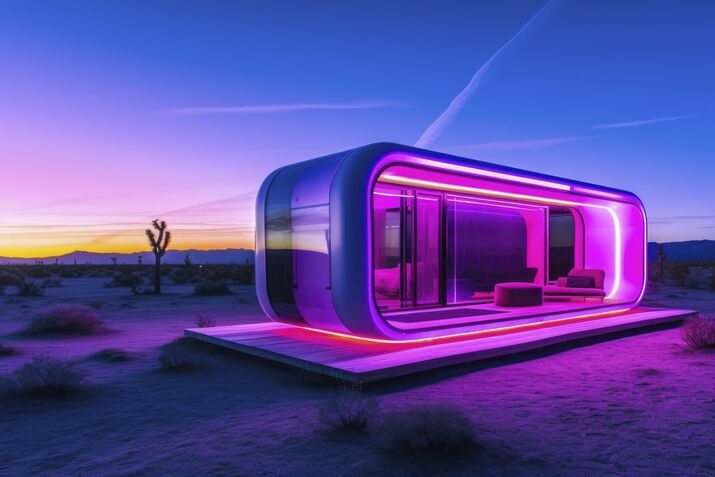
The strategic advantage of outsourcing lies in its ability to deliver the right asset for the right immersive platform, from architecture to e-commerce.
3. E-commerce and Augmented Reality – Virtual Reality Models
For retail, AR is a conversion tool. The model must be perfect to scale and instantly loadable.
- Virtual Try-On and Placement: Outsource 3D Modeling services specializing in AR/VR deliver lightweight, scale-accurate 3D Product Design assets that allow customers to use their phones to virtually try on clothing or place a digital sofa in their living room. This direct visualization drastically reduces product returns.
- Format Mastery: The partner must be proficient in delivering assets in the critical formats for immediate deployment: USDZ (for Apple’s ARKit) and GLB/GLTF (for Google ARCore and web-based AR), a technical requirement few in-house teams can maintain.
4. Metaverse Showrooms and 3D Architecture Digital Twins
VR and the Metaverse provide the ultimate platform for large-scale, collaborative experiences, essential for design and real estate.
- Virtual Real Estate: 3D Architecture firms use outsourcing to create fully navigable, hyper-realistic VR models of unbuilt spaces (virtual twin showrooms). This allows clients and stakeholders to walk through the building together, regardless of their physical location, accelerating the design review and sales process.
- Complex Scene Optimization: Outsourcing partners are expert at breaking down massive architectural and city models into optimized, loadable chunks—crucial for managing the immense file sizes of a full virtual environment in a shared Metaverse space.
5. Gaming and Experiential Marketing
Brands are building persistent experiences within virtual worlds like Roblox and Decentraland.
- Avatar and Accessory Creation: Outsourced teams design and optimize custom avatar assets, wearables, and accessories that adhere to the specific file size and bone structure requirements of the target platform, enabling brands to seamlessly integrate into the gaming economy.
III. The Outsourcing Workflow: Speed, Scale, and Synergy
Choosing to Outsource 3D Modeling services provides operational advantages that accelerate a brand’s Metaverse strategy.

6. Mass Production of 3D Furniture Modeling Catalogs
Digitizing a product line for the Metaverse is a huge, urgent task.
- Scalability: A specialized outsourcing firm can deploy large, coordinated teams instantly to convert thousands of SKUs into Metaverse-ready models within months, a feat impossible for a small internal team.
- Configuration Ready: Models are often delivered with modular components and separate material IDs, making them ready to plug into a virtual product configurator, where customers can customize the 3D Furniture Modeling piece in real-time within the virtual environment.
7. Bridging the Physical-to-Digital Gap
The most common starting point for a digital twin is a physical prototype or a technical CAD file.
- Source Data Conversion: Outsourcing partners are skilled at taking source data—whether CAD files (STEP, IGES) or photogrammetry scans—and expertly cleaning, optimizing, and texturing that raw geometry into a production-ready Augmented Reality – Virtual Reality Model. This crucial technical step ensures the digital twin is accurate and performant.
8. The Role of AI in 3D Modeling and Design Outsourcing
Leading outsourcing partners leverage AI to automate parts of the optimization pipeline, further boosting speed and reducing cost.
- AI-Assisted Retopology: AI tools can help automate the tedious process of reducing polygons while preserving edge flow.
- Automated Texture Generation: AI can quickly generate PBR maps or create variations of Texturing, allowing human artists to focus their time on refinement and artistic oversight, not manual labor.
IV. The Strategic Partnership Checklist
To maximize ROI in the complex field of Metaverse content, businesses must ask the right questions when selecting an Outsource 3D Modeling services partner.
9. Technical Vetting and Quality Control
- Ask for the Wireframe: Do not rely only on the final 3D Rendering. Request to see the mesh topology of their portfolio pieces. Clean, low-poly geometry is the non-negotiable proof of AR/VR competence.
- Testing Protocol: Inquire about their QA process. Do they test the model’s frame rate and functionality on target platforms (e.g., Meta Quest 3, latest iOS/Android devices) before delivery?
- Data Security: Demand strict NDAs and secure file transfer protocols to protect your unreleased 3D Product Design concepts from unauthorized leaks into the digital world.
10. Delivery and Integration Expertise
- Engine Experience: The partner must demonstrate mastery of the target real-time engines (Unity, Unreal Engine). Their value is in delivering assets that drop seamlessly into your development environment with minimal internal rework.
- Standard Adherence: They must adhere to emerging Metaverse standards, ensuring your assets function correctly and consistently across different virtual platforms.
Conclusion: Outsourcing as the Gateway to Immersion
The Metaverse, AR, and VR are redefining how consumers interact with products, brands, and spaces. The core currency of this new reality is the high-quality, optimized 3D model.
By choosing to partner with expert Outsource 3D Modeling services, businesses gain immediate access to the specialized talent and advanced technical pipelines necessary to navigate the complexity of optimization, PBR Texturing, and platform compliance. This strategic delegation allows brands to accelerate the creation of their Augmented Reality – Virtual Reality Models, ensuring their 3D Furniture Modeling, 3D Product Design, and 3D Architecture are not just seen, but experienced, positioning them as leaders on the frontier of digital immersion.
❓ FAQ’s
1. What is the biggest technical difference between modeling for the Metaverse versus standard 3D Rendering?
A: The biggest difference is the focus on real-time performance. Metaverse/AR/VR models must be highly optimized (low polygon count) and efficiently textured to render smoothly at high frame rates on mobile devices and headsets without lag.
2. What is Retopology, and why is it essential for Augmented Reality – Virtual Reality models?
A: Retopology is the process of creating a new, simplified, low-polygon mesh that preserves the visual detail of a high-resolution source model (like a CAD file). It is essential because it reduces the file size and complexity, enabling the model to load and perform quickly in real-time AR/VR environments.
3. How does PBR Texturing relate to the quality of a 3D Furniture Modeling asset?
A: PBR (Physically Based Rendering) Texturing uses specialized maps to accurately simulate how light interacts with materials (e.g., wood, metal, fabric). This ensures that the virtual 3D Furniture Modeling asset looks photorealistic and reacts correctly to dynamic lighting when placed in a user’s real-world AR environment.
4. What are the key file formats an outsourced partner must deliver for cross-platform immersive use?
A: The essential formats are GLTF/GLB (the universal open-source standard for the web and Metaverse) and USDZ (Apple’s dedicated format for ARKit). The Outsource 3D Modeling services partner must ensure compliance with both.
5. How does outsourcing help scale 3D Product Design for a large catalog?
A: Outsourcing provides modularity and speed. Partners create the models to be configurator-ready with interchangeable material slots, allowing the client to instantly generate hundreds of variations for different colors or finishes simply by swapping Texturing maps on a single base model.
6. What crucial metric related to 3D Architecture should be guaranteed by the outsourcing partner?
A: Guaranteed Model Optimization and LOD (Level of Detail) compliance. This ensures that large-scale 3D Architecture environments can be explored in VR without performance issues by using high-detail models up close and simplified models in the distance.
